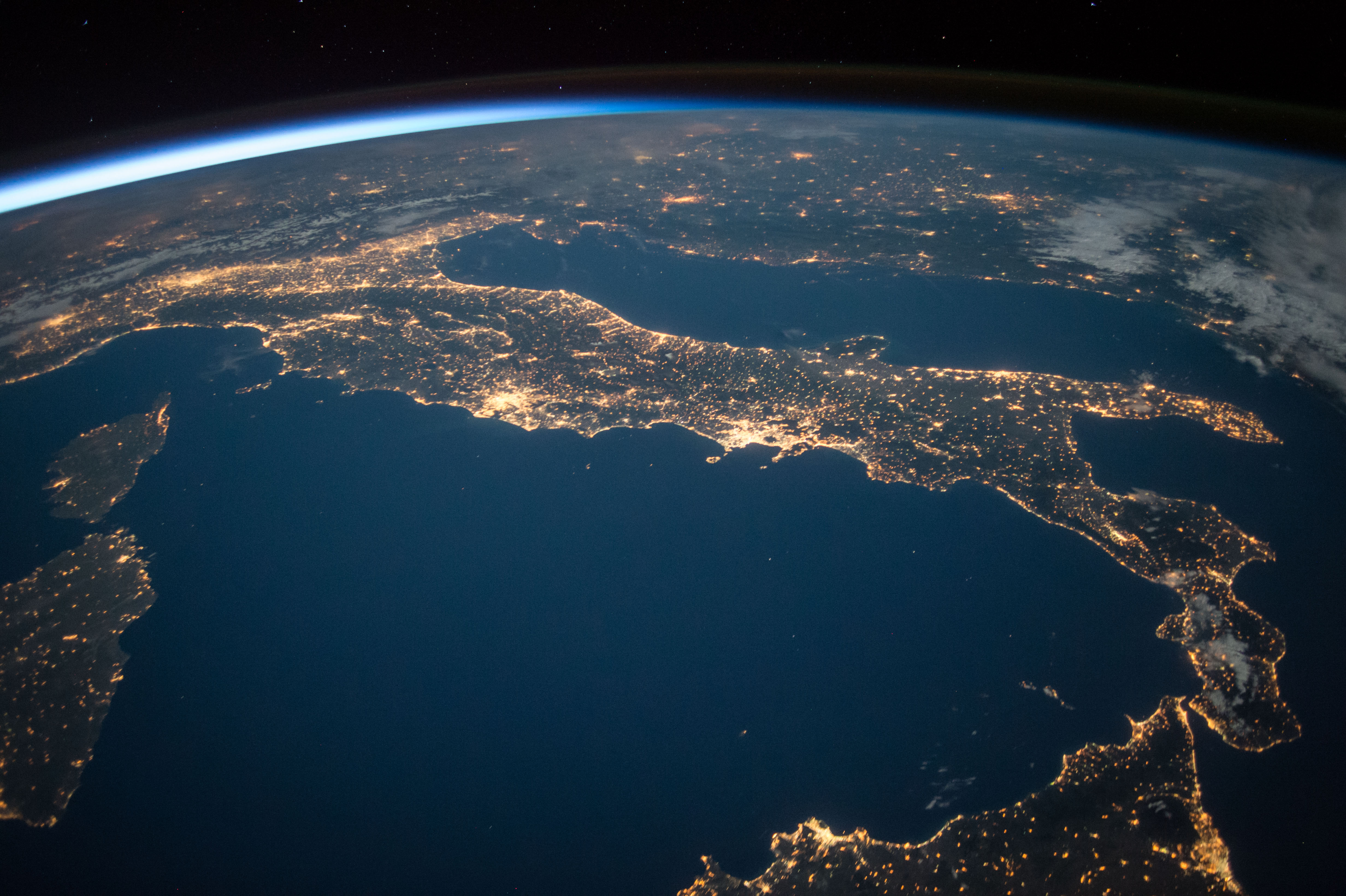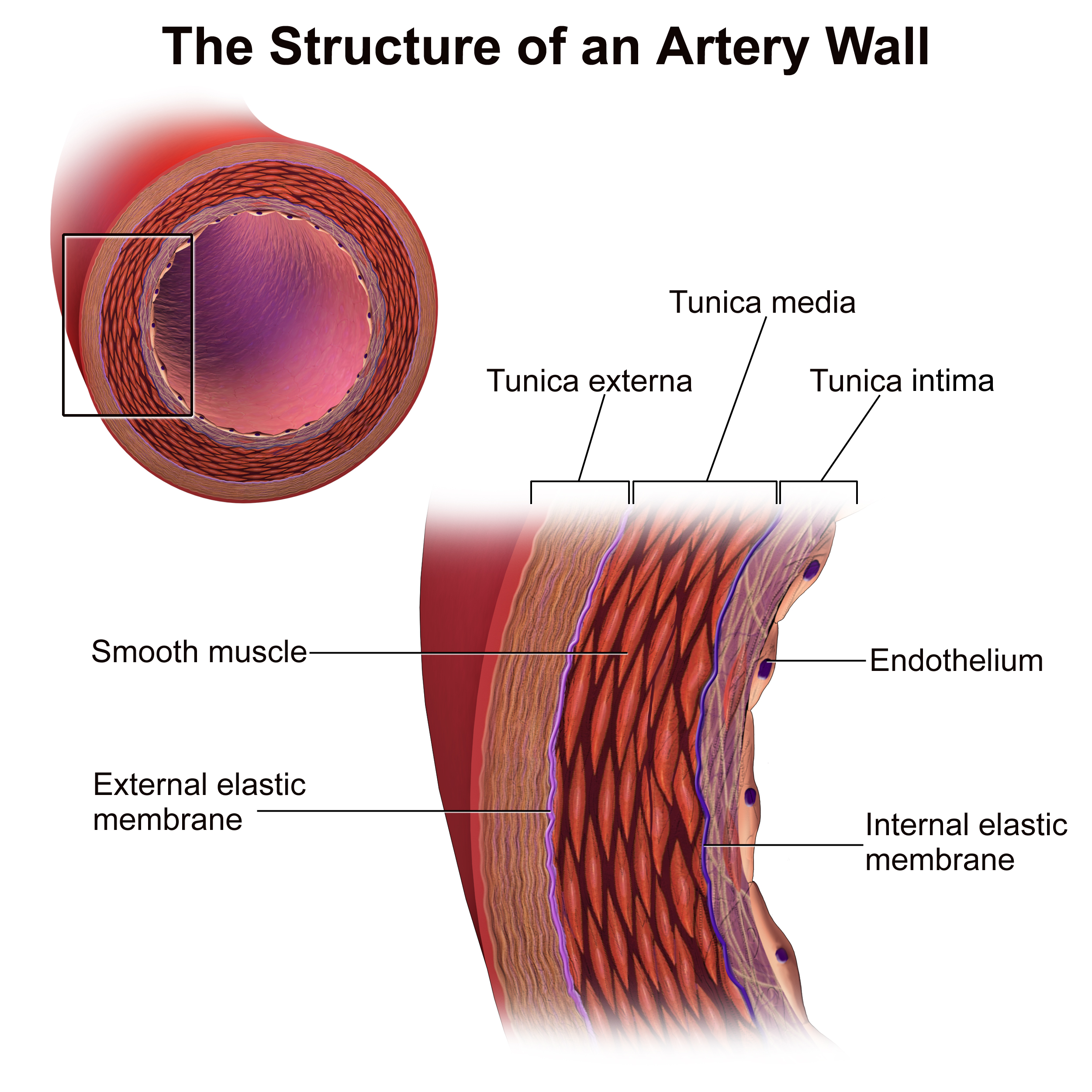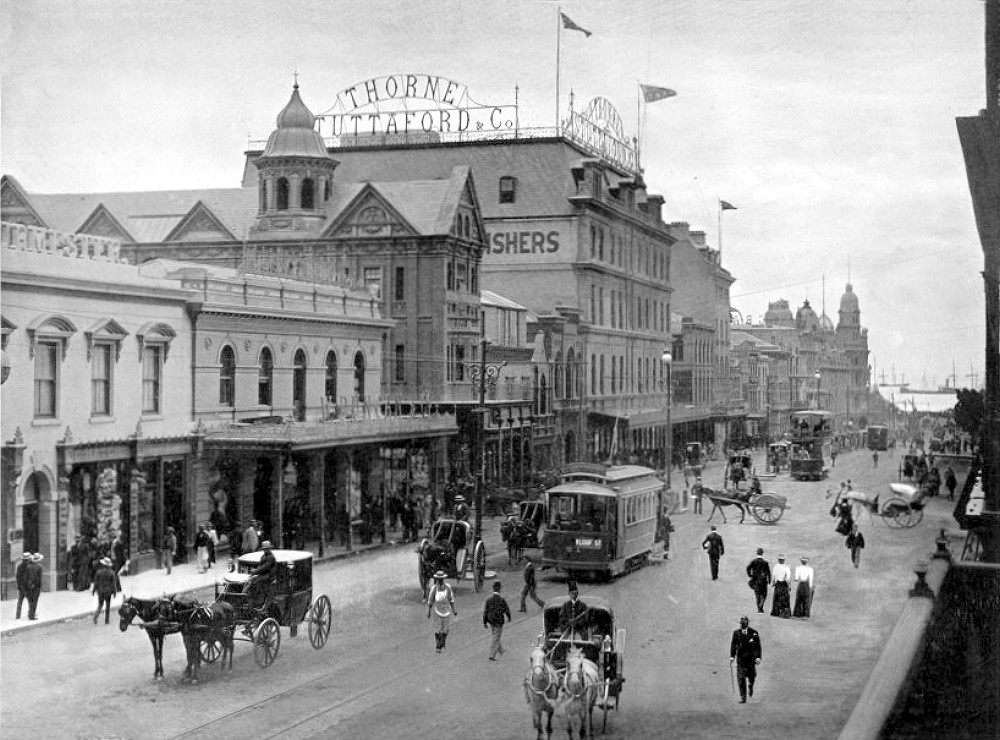|
De Aar
De Aar is a town in the Northern Cape province of South Africa. It has a population of around 42,000 inhabitants. It is the second-most important railway junction in the country, situated on the line between Cape Town and Kimberley. The junction was of particular strategic importance to the British during the Second Boer War. De Aar is also a primary commercial distribution centre for a large area of the central Great Karoo. Major production activities of the area include wool production and livestock farming. The area is also popular for hunting, although the region is rather arid. De Aar is also affectionately known as "Die SES" deriving its nickname from the six farms that have surrounded De Aar since the 1900s. History De Aar was originally established on the Farm "De Aar." The name means "the artery," a reference to its underground water supply. The Cape Government Railways were founded in 1872, and the route that the government chose for the line to connect the Kimberle ... [...More Info...] [...Related Items...] OR: [Wikipedia] [Google] [Baidu] |
Country
A country is a distinct part of the world, such as a state, nation, or other political entity. It may be a sovereign state or make up one part of a larger state. For example, the country of Japan is an independent, sovereign state, while the country of Wales is a component of a multi-part sovereign state, the United Kingdom. A country may be a historically sovereign area (such as Korea), a currently sovereign territory with a unified government (such as Senegal), or a non-sovereign geographic region associated with certain distinct political, ethnic, or cultural characteristics (such as the Basque Country). The definition and usage of the word "country" is flexible and has changed over time. '' The Economist'' wrote in 2010 that "any attempt to find a clear definition of a country soon runs into a thicket of exceptions and anomalies." Most sovereign states, but not all countries, are members of the United Nations. The largest country by area is Russia, while the ... [...More Info...] [...Related Items...] OR: [Wikipedia] [Google] [Baidu] |
South African Standard Time
South African Standard Time (SAST) is the time zone used by all of South Africa as well as Eswatini and Lesotho. The zone is two hours ahead of UTC ( UTC+02:00) and is the same as Central Africa Time. Daylight saving time is not observed in either time zone. Solar noon in this time zone occurs at 30° E in SAST, effectively making Pietermaritzburg at the correct solar noon point, with Johannesburg and Pretoria slightly west at 28° E and Durban slightly east at 31° E. Thus, most of South Africa's population experience true solar noon at approximately 12:00 daily. The western Northern Cape and Western Cape differ, however. Everywhere on land west of 22°30′ E effectively experiences year-round daylight saving time because of its location in true UTC+01:00 but still being in South African Standard Time. Sunrise and sunset are thus relatively late in Cape Town, compared to the rest of the country. To illustrate, daylight hours for South Africa's western ... [...More Info...] [...Related Items...] OR: [Wikipedia] [Google] [Baidu] |
South African Army
The South African Army is the principal land warfare force of South Africa, a part of the South African National Defence Force (SANDF), along with the South African Air Force, South African Navy and South African Military Health Service. The Army is commanded by the Chief of the Army, who is subordinate to the Chief of the SANDF. Formed in 1912, as the Union Defence Force in the Union of South Africa, through the amalgamation of the South African colonial forces following the unification of South Africa. It evolved within the tradition of frontier warfare fought by Boer Commando (militia) forces, reinforced by the Afrikaners' historical distrust of large standing armies. Following the ascension to power of the National Party, the Army's long-standing Commonwealth ties were afterwards cut. The South African Army was fundamentally changed by the end of Apartheid and its preceding upheavals, as the South African Defence Force became the SANDF. This process also led to ... [...More Info...] [...Related Items...] OR: [Wikipedia] [Google] [Baidu] |
Magazine (artillery)
Magazine is the name for an item or place within which ammunition or other explosive material is stored. It is taken originally from the Arabic word "makhāzin" (مخازن), meaning 'storehouses', via Italian and Middle French. The term is also used for a place where large quantities of ammunition are stored for later distribution, or an ammunition dump. This usage is less common. Field magazines In the early history of tube artillery drawn by horses (and later by mechanized vehicles), ammunition was carried in separate unarmored wagons or vehicles. These soft-skinned vehicles were extremely vulnerable to enemy fire and to explosions caused by a weapons malfunction. Therefore, as part of setting up an artillery battery, a designated place would be used to shelter the ready ammunition. In the case of batteries of towed artillery the temporary magazine would be placed, if possible, in a pit, or natural declivity, or surrounded by sandbags or earthworks. Circumstances mig ... [...More Info...] [...Related Items...] OR: [Wikipedia] [Google] [Baidu] |
97 Ammunition Depot '', a video game
{{numberdis ...
97 may refer to: * 97 (number) Years * 97 BC * AD 97 * 1997 * 2097 Other uses * 97%, the figure from a seminal study of scientific consensus on climate change (i.e. 97% of surveyed articles on climate change agreed that humans are causing global warming) * "'97" (song), from the compilation album ''Alkaline Trio'' by Chicago-based punk rock band Alkaline Trio * Saab 97, an automobile * British Rail Class 97 * Hot 97, a hip-hop radio station in New York City under the name WQHT *Microsoft Office 97, a version of Microsoft Office. * Marching 97, the Lehigh University marching band See also * * Berkelium (atomic number), a chemical element * List of highways numbered * ''Madden NFL 97 ''Madden NFL 97'' is a football video game released in 1996. It was the first multiplatform ''Madden'' game released for the 32-bit consoles (following a 3DO-exclusive version simply titled '' John Madden Football'' in 1994), being released on ... [...More Info...] [...Related Items...] OR: [Wikipedia] [Google] [Baidu] |
South African Defence Force
The South African Defence Force (SADF) (Afrikaans: ''Suid-Afrikaanse Weermag'') comprised the armed forces of South Africa from 1957 until 1994. Shortly before the state reconstituted itself as a republic in 1961, the former Union Defence Force was officially succeeded by the SADF, which was established by the Defence Act (No. 44) of 1957. The SADF, in turn, was superseded by the South African National Defence Force in 1994. Mission and structure The SADF was organised to perform a dual mission: to counter possible insurgency in all forms, and to maintain a conventional military arm which could defend the republic's borders, making retaliatory strikes as necessary. As the military expanded during the 1970s, the SADF general staff was organised into six sections—finance, intelligence, logistics, operations, personnel, and planning; uniquely, the South African Medical Service (SAMS) was made co-equal with the South African Army, the South African Navy and the South Africa ... [...More Info...] [...Related Items...] OR: [Wikipedia] [Google] [Baidu] |
Cape Government Railways
The Cape Government Railways (CGR) was the government-owned railway operator in the Cape Colony from 1874 until the creation of the South African Railways (SAR) in 1910. History Private railways The first railways at the Cape were privately owned. The Cape Town Railway and Dock Company started construction from Cape Town in 1859, reaching Eerste River by 1862 and Wellington by 1863. Meanwhile, by 1864, the Wynberg Railway Company had connected Cape Town and Wynberg. For the moment, railway development at the Cape did not continue eastwards beyond Wellington because of the barrier presented by the mountains of the Cape Fold Belt. Formation of CGR The discovery of diamonds, and the consequent rush to Kimberley that started in 1871, gave impetus to the development of railways in South Africa. Shortly afterwards, in 1872, the Cape Colony attained responsible government under the leadership of Prime Minister John Molteno, who presented plans for an enormous network of railways ... [...More Info...] [...Related Items...] OR: [Wikipedia] [Google] [Baidu] |
Artery
An artery (plural arteries) () is a blood vessel in humans and most animals that takes blood away from the heart to one or more parts of the body (tissues, lungs, brain etc.). Most arteries carry oxygenated blood; the two exceptions are the pulmonary and the umbilical arteries, which carry deoxygenated blood to the organs that oxygenate it (lungs and placenta, respectively). The effective arterial blood volume is that extracellular fluid which fills the arterial system. The arteries are part of the circulatory system, that is responsible for the delivery of oxygen and nutrients to all cells, as well as the removal of carbon dioxide and waste products, the maintenance of optimum blood pH, and the circulation of proteins and cells of the immune system. Arteries contrast with veins, which carry blood back towards the heart. Structure The anatomy of arteries can be separated into gross anatomy, at the macroscopic level, and microanatomy, which must be studied with a ... [...More Info...] [...Related Items...] OR: [Wikipedia] [Google] [Baidu] |
Great Karoo
The Karoo ( ; from the Afrikaans borrowing of the South Khoekhoe !Orakobab or Khoemana word ''ǃ’Aukarob'' "Hardveld") is a semi- desert natural region of South Africa. No exact definition of what constitutes the Karoo is available, so its extent is also not precisely defined. The Karoo is partly defined by its topography, geology and climate, and above all, its low rainfall, arid air, cloudless skies, and extremes of heat and cold.Potgieter, D.J. & du Plessis, T.C. (1972) ''Standard Encyclopaedia of Southern Africa''. Vol. 6. pp. 306–307. Nasou, Cape Town.''Reader’s Digest Illustrated Guide to Southern Africa''. (5th Ed. 1993). pp. 78–89. Reader’s Digest Association of South Africa Pty. Ltd., Cape Town. The Karoo also hosted a well-preserved ecosystem hundreds of million years ago which is now represented by many fossils. The ǃ’Aukarob formed an almost impenetrable barrier to the interior from Cape Town, and the early adventurers, explorers, hunters, and travelers ... [...More Info...] [...Related Items...] OR: [Wikipedia] [Google] [Baidu] |
Second Boer War
The Second Boer War ( af, Tweede Vryheidsoorlog, , 11 October 189931 May 1902), also known as the Boer War, the Anglo–Boer War, or the South African War, was a conflict fought between the British Empire and the two Boer Republics (the South African Republic and the Orange Free State) over the Empire's influence in Southern Africa from 1899 to 1902. Following the discovery of gold deposits in the Boer republics, there was a large influx of "foreigners", mostly British from the Cape Colony. They were not permitted to have a vote, and were regarded as "unwelcome visitors", invaders, and they protested to the British authorities in the Cape. Negotiations failed and, in the opening stages of the war, the Boers launched successful attacks against British outposts before being pushed back by imperial reinforcements. Though the British swiftly occupied the Boer republics, numerous Boers refused to accept defeat and engaged in guerrilla warfare. Eventually, British scorched earth po ... [...More Info...] [...Related Items...] OR: [Wikipedia] [Google] [Baidu] |
Kimberley, South Africa
Kimberley is the capital and largest city of the Northern Cape province of South Africa. It is located approximately 110 km east of the confluence of the Vaal and Orange Rivers. The city has considerable historical significance due to its diamond mining past and the siege during the Second Anglo-Boer war. British businessmen Cecil Rhodes and Barney Barnato made their fortunes in Kimberley, and Rhodes established the De Beers diamond company in the early days of the mining town. On 2 September 1882, Kimberley was the first city in the Southern Hemisphere and the second in the world after Philadelphia, Pennsylvania in the United States to integrate electric street lights into its infrastructure. The first stock exchange in Africa was built in Kimberley, as early as 1881. History Discovery of diamonds In 1866, Erasmus Jacobs found a small brilliant pebble on the banks of the Orange River, on the farm ''De Kalk'' leased from local Griquas, near Hopetown, which was his f ... [...More Info...] [...Related Items...] OR: [Wikipedia] [Google] [Baidu] |
Cape Town
Cape Town ( af, Kaapstad; , xh, iKapa) is one of South Africa's three capital cities, serving as the seat of the Parliament of South Africa. It is the legislative capital of the country, the oldest city in the country, and the second largest (after Johannesburg). Colloquially named the ''Mother City'', it is the largest city of the Western Cape province, and is managed by the City of Cape Town metropolitan municipality. The other two capitals are Pretoria, the executive capital, located in Gauteng, where the Presidency is based, and Bloemfontein, the judicial capital in the Free State, where the Supreme Court of Appeal is located. Cape Town is ranked as a Beta world city by the Globalization and World Cities Research Network. The city is known for its harbour, for its natural setting in the Cape Floristic Region, and for landmarks such as Table Mountain and Cape Point. Cape Town is home to 66% of the Western Cape's population. In 2014, Cape Town was named the ... [...More Info...] [...Related Items...] OR: [Wikipedia] [Google] [Baidu] |







